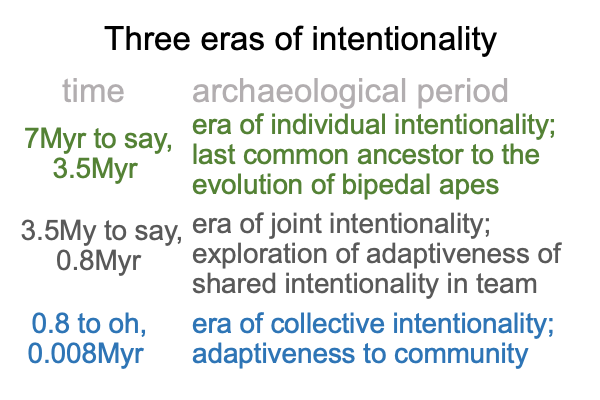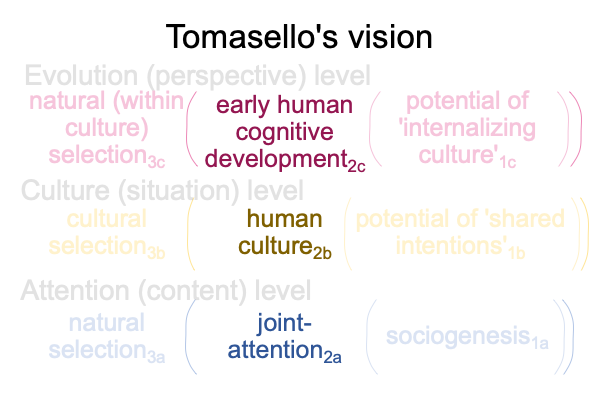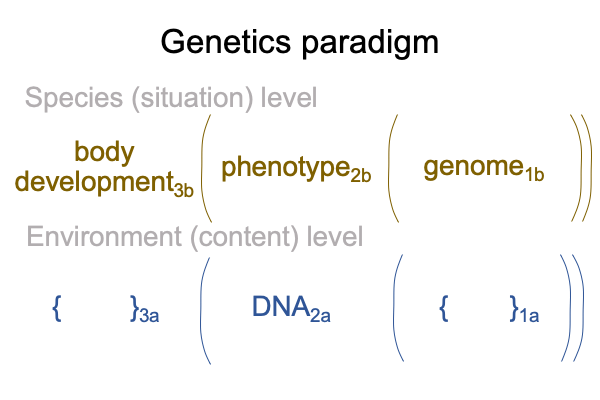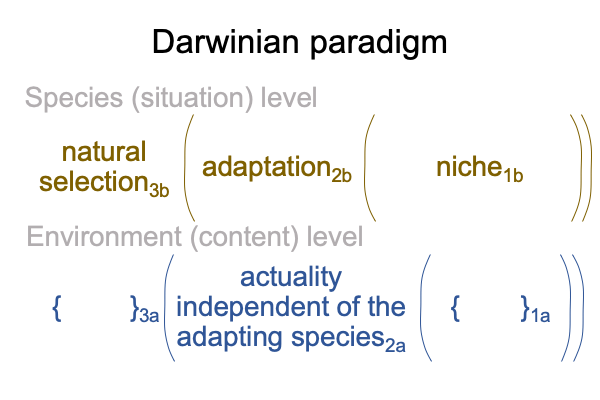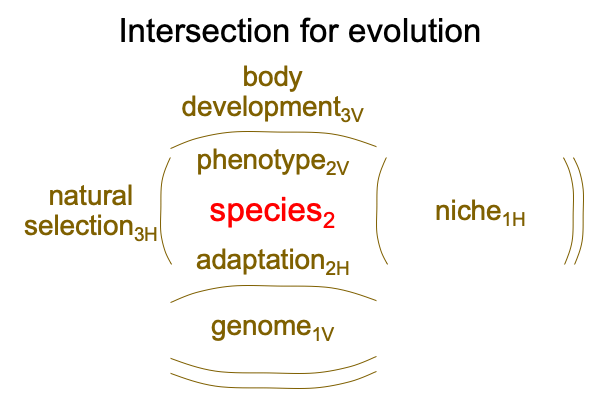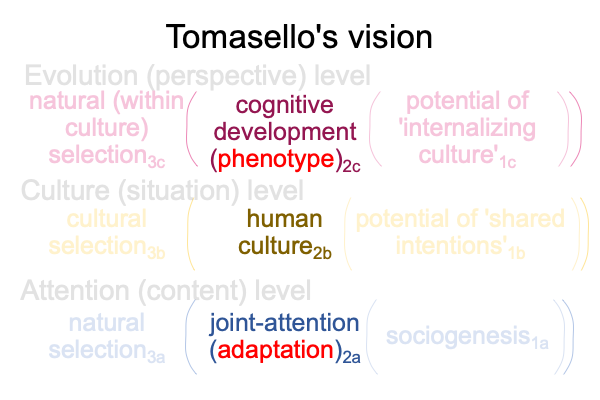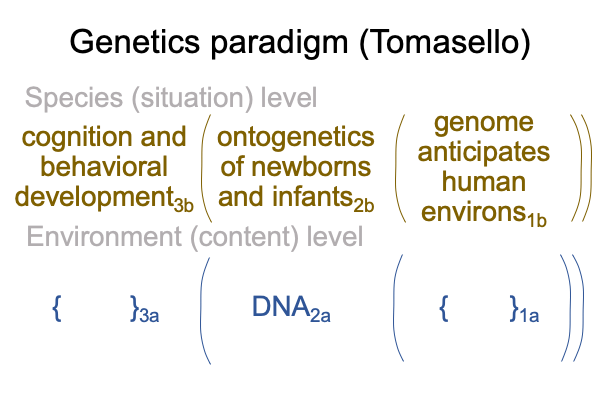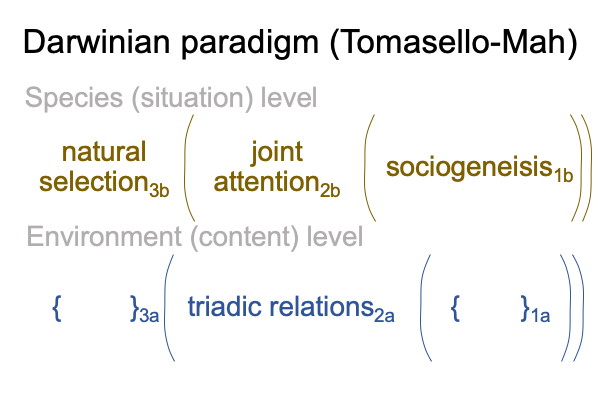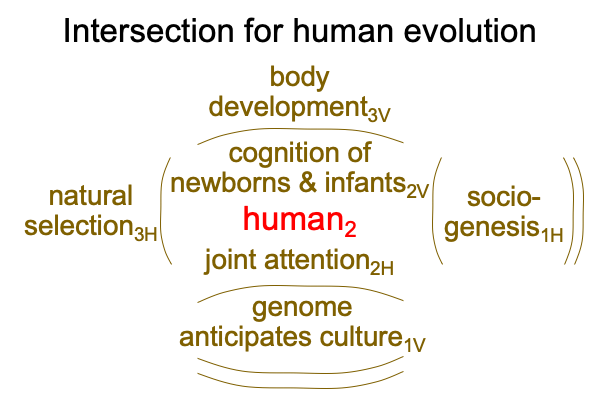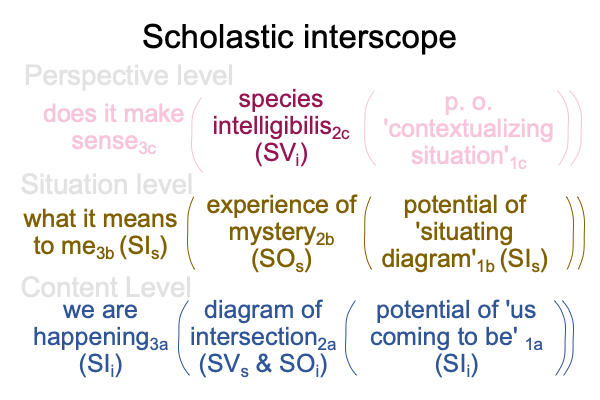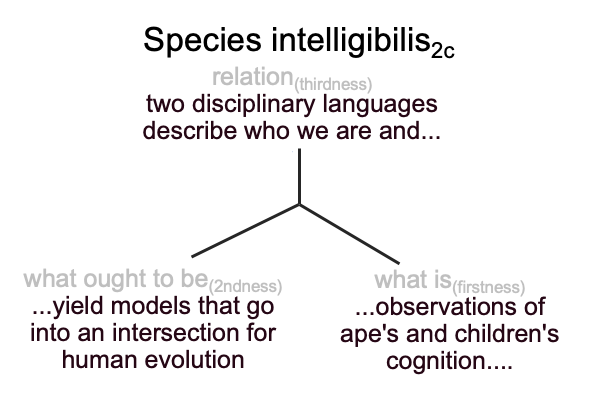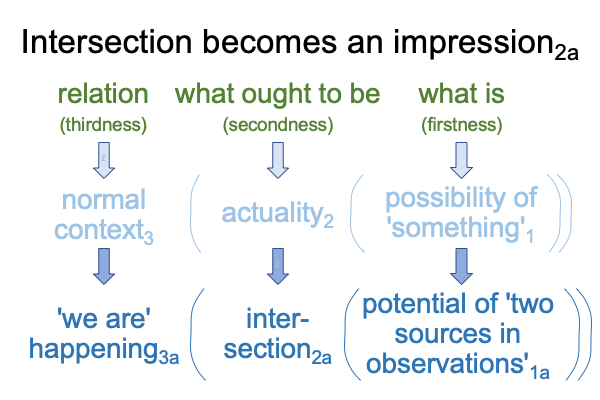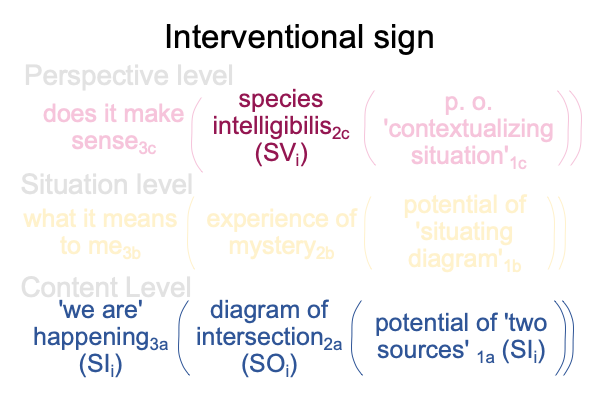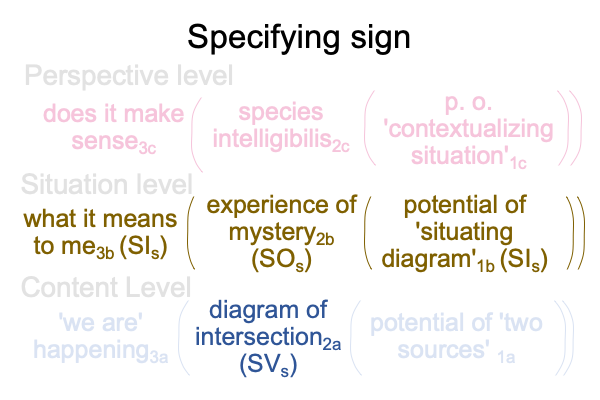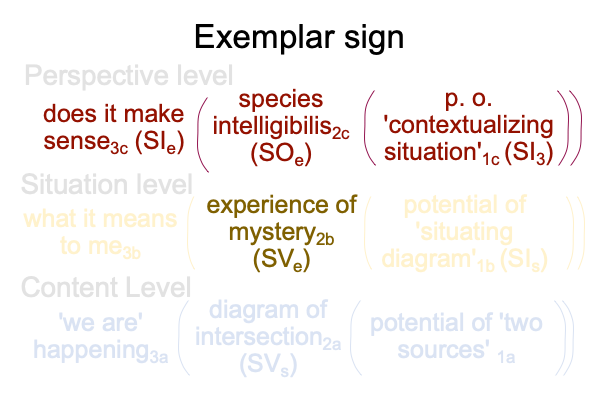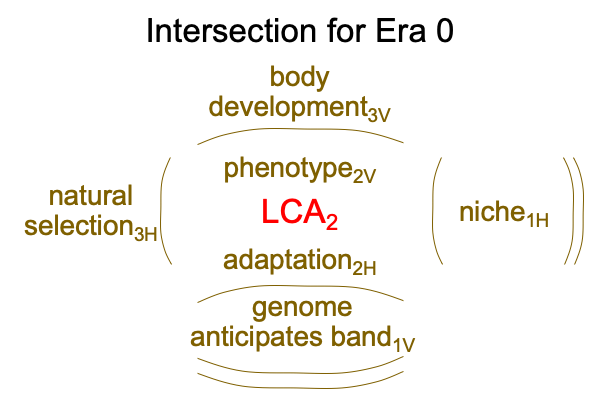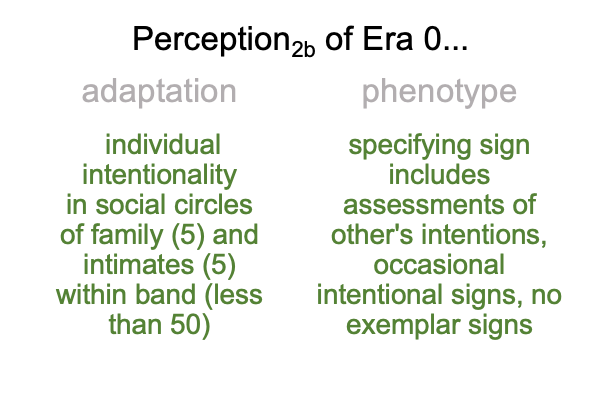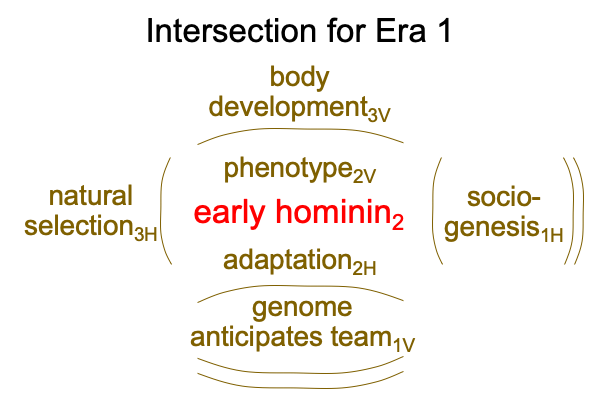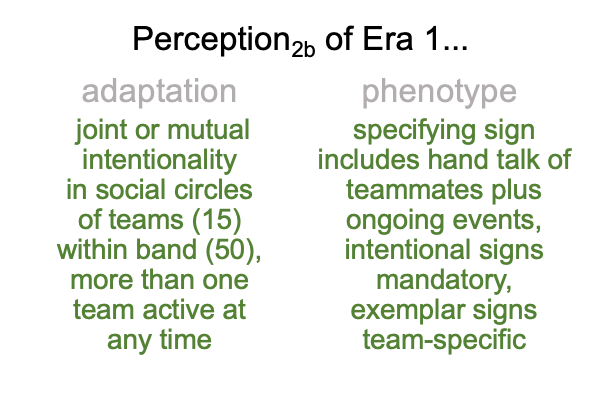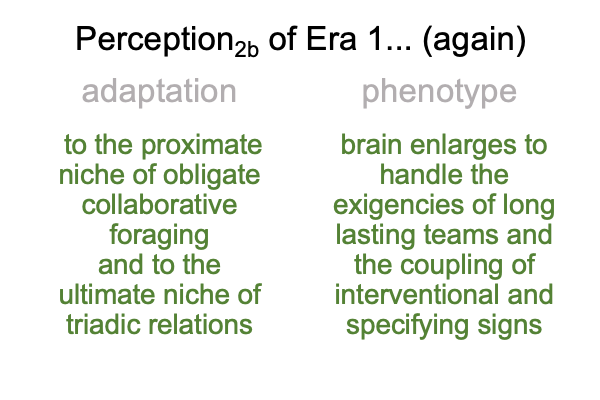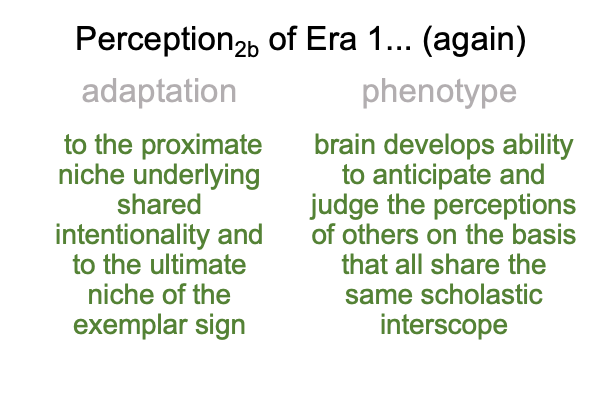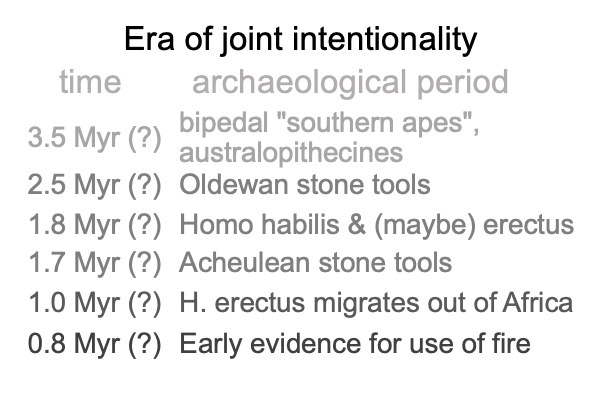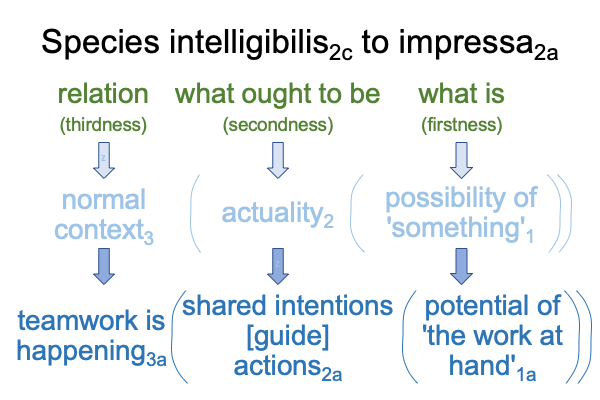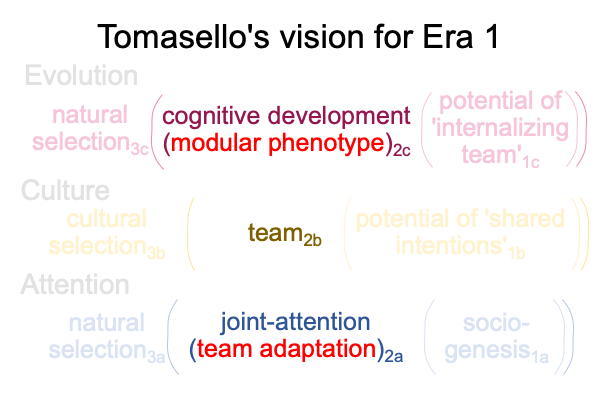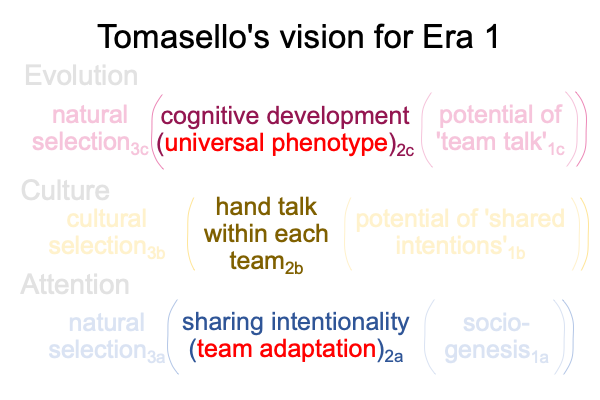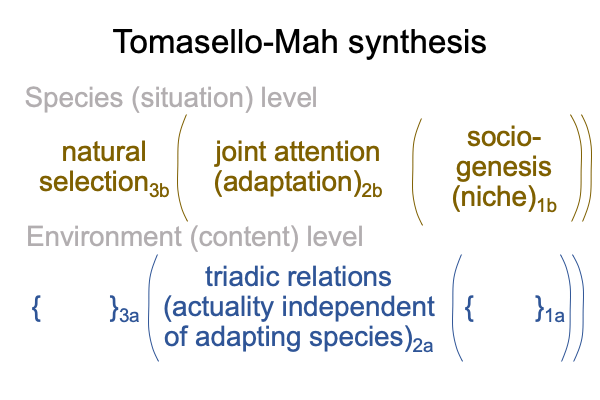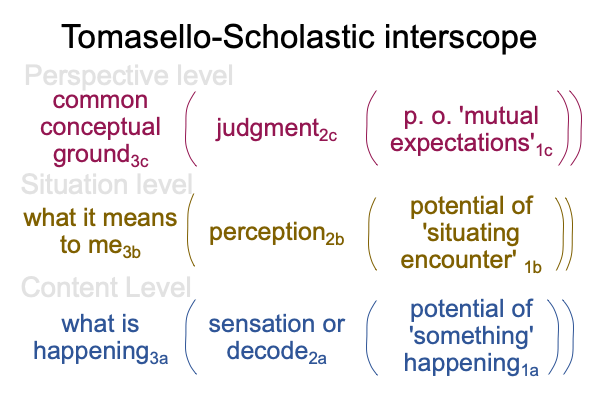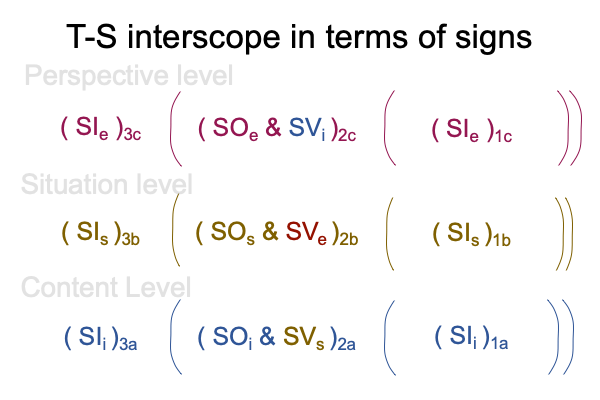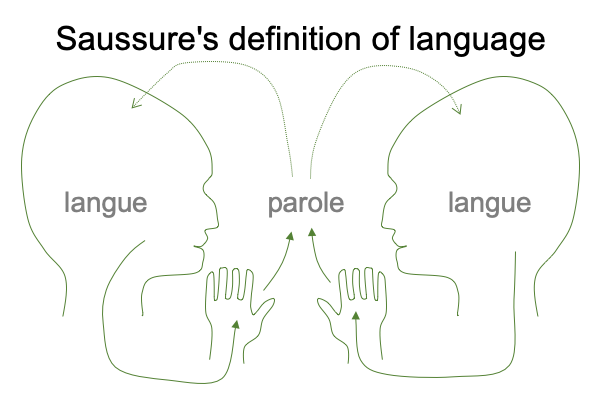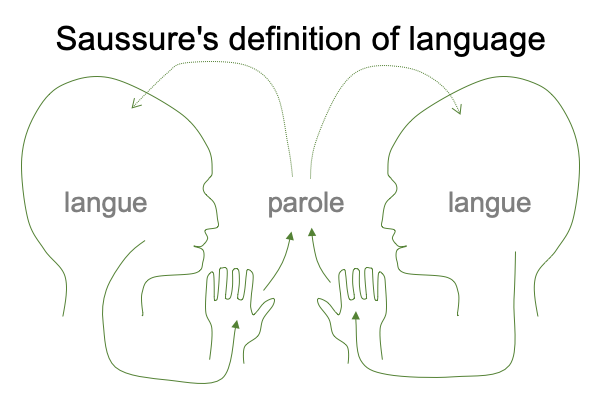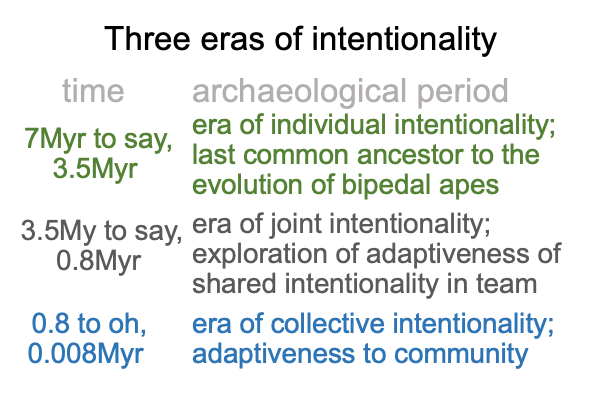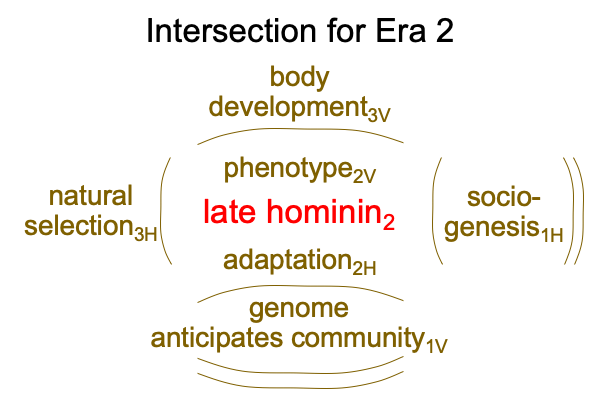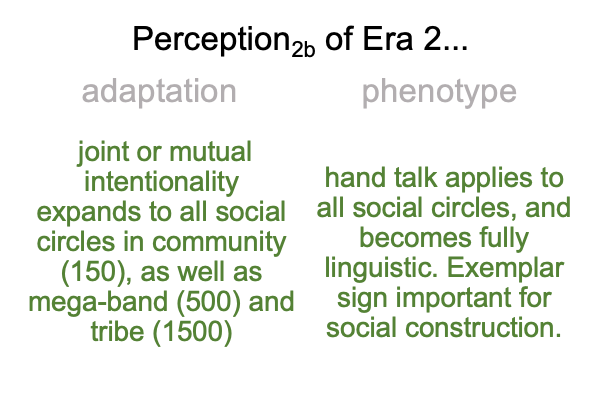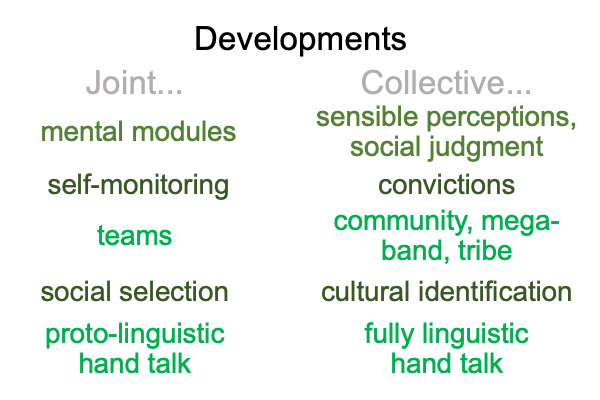Looking at Michael Tomasello’s Book (2014) “A Natural History of Human Thinking” (Part 8 of 22)
0234 Chapter three of Tomasello’s book is titled, “Joint Intentionality”.
At this point, I would like to re-iterate my associations for the eras of intentionality to the archaeological record.
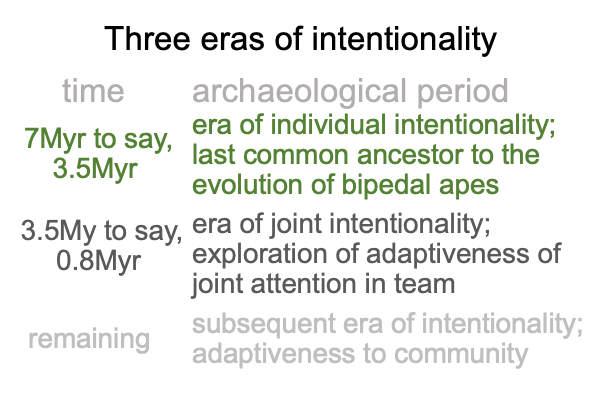
0235 Tomasello’s three periods of intentionality correspond to the titles of chapters two, three and four.
In each era, shared intentionality adapts to a select number of social circles.
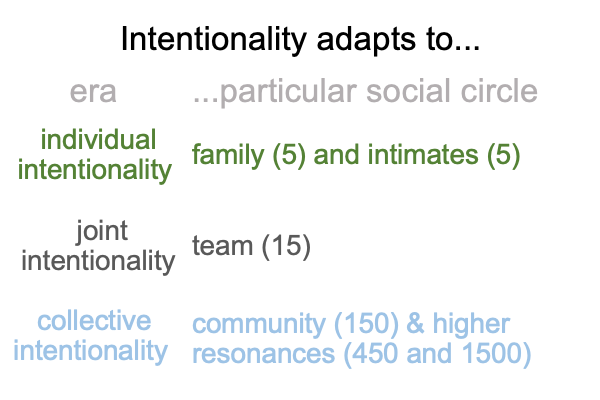
0236 Now, when do these eras appear in the archeological record?
Well, the last common ancestor is an estimate from the genetic divergence between chimpanzees and humans.
In regards to fossils, some finds are more controversial than others. Each fossil ends up classified according a genus and a species. Radiometric dating can be conducted on volcanic ash laid down by a nearby eruption. The dust contains radioactive minerals that serve as clocks on the timescale of millions of years. The best dated fossils occur in a sedimentary layer between layers of volcanic ash.
0237 Here is a picture of the earliest fossil appearances for the human lineage.
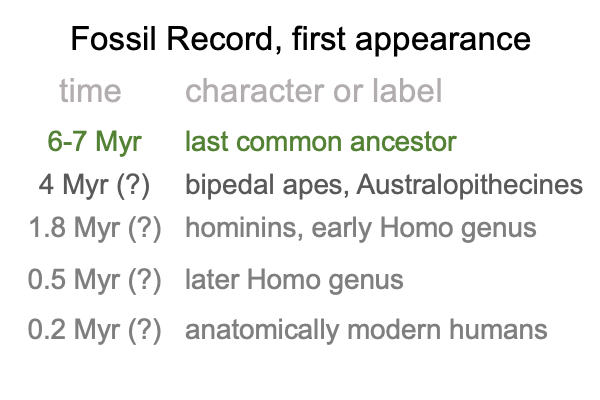
0238 What does this timeline imply?
First, bipedalism marks the start of the era of joint intentionality.
Second, the Homo genus appears around the middle of the era of joint intentionality.
Third, the speciation of the Neanderthal, the Denisovan, Homo heidelbergensis, early Homo sapiens and other late species in the Homo genus, starts soon after hominin cranial capacity has significantly expanded during the Era of Joint Intentionality. These later species must be re-organizing the multiple specialized mental modules associated with adaptation into particular teams.
0239 Do we know anything about the character of these archaic teams?
The archaeological record of hominin artifacts provide clues.
The stone-tool using team is the only one to leave archaeological traces. These traces are significant, because stone tools are useful for highly dangerous scavenging (Oldowan) and hunting (Acheulean) team operations. This suggests that some teams engage in less risky harvesting and other teams tolerate dangerous conditions while harvesting. Living in the wildis always dangerous to some degree.
Notably, hand talk is used as a proto-language within each team. I use the term, “proto-language”, because each team has its own vocabulary and grammar. Hominins get better and better at hand talk within teams.
0240 Here is a list of artifact-based markers in the archaeological record.
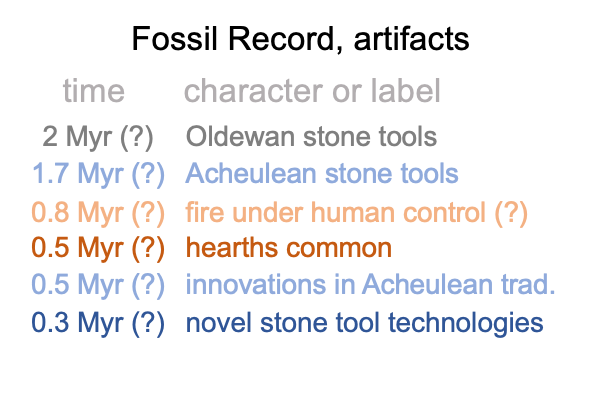
0241 What about the domestication of fire?
Was there a fire team?
No, but there must have been teams that use fire in various ways.
0242 The domestication of fire makes a good marker for the start of the era of collective intentionality, because fire increases the number and diversity of teams. How so? Cooking food makes less digestible raw food into digestible tasty delights. More calories are available when food is cooked. Cooked food is easier to eat. Cooking often removes toxins. It is like a bakery extending its offerings from baked bread to every confection in a French pastry shop.
Well, maybe I am exaggerating.
0243 At the same time, it is hard to exaggerate (1) slow and steady increases in the sophistication of stone-tool and composite technologies, (2) the speciation of the Neanderthal, the Denisovan, and perhaps, other species, from late Homo erectus, (3) current phenotypic clues that hominins develop a general fully linguistic hand talk, and (4) the descent of the larynx, suggesting that hominins are using the voice (singing) to synchronize mega-band and tribal gatherings. Probably, singing gets caught up with sexual selection. Hominins get very good at warbling.
0244 Once the vocal tract comes under voluntary neural control, the voice is exapted as an accompaniment to hand-talk at the start of our own species.
If that is so, then anatomically modern humans make their appearance on Earth practicing a dual-mode way of talking,hand-speech talk, containing all the natural sign-qualities of hand talk along with the adornment of speech. Initially, speech serves as a melodic complement. Then, over generations, speech takes on a life of its own, while remaining within the bounds of hand-speech talk.
Here is a list of the three eras of intentionality, corresponding to chapter two, three and four.
